The Orion spacecraft for Artemis II, the first crewed mission towards the Moon in over 50 years, is now fully assembled and ready for the next steps ahead of launch.
Last week, Orion was moved from the Neil A. Armstrong Operations and Checkout Facility, where it was assembled and tested, to NASA’s Exploration Ground Systems team. This handover marks the transition from assembly to launch preparations.
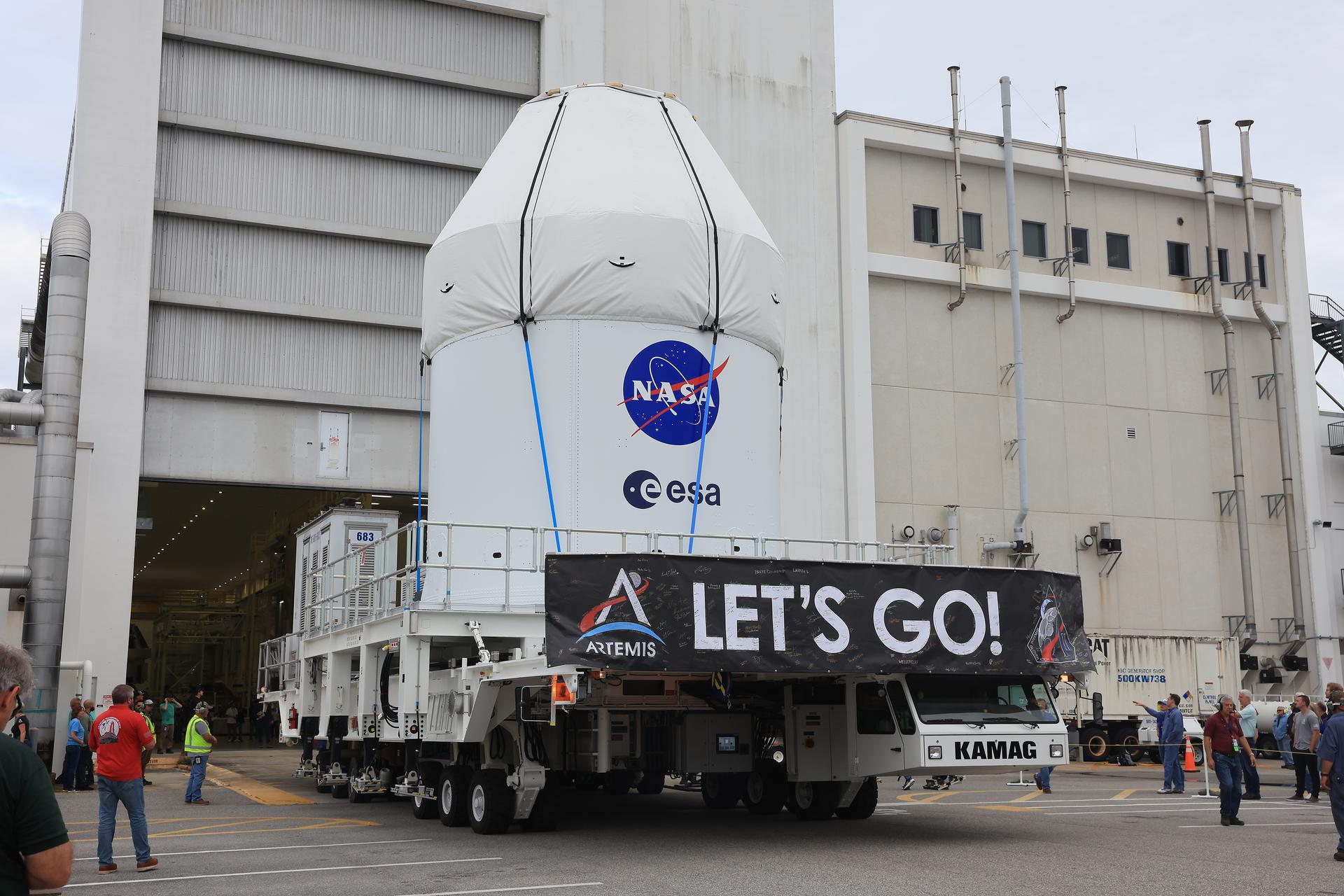
Orion during its journey on 3 May, with its protective fairing panels clearly visible and proudly bearing the ESA and NASA logos. Credit: NASA-K. Shiflett
Europe powers Orion
A central element of the spacecraft is ESA’s European Service Module, developed by European industry and led by Airbus. The module supplies propulsion, electrical power, thermal control and life-support essentials for the astronauts, making it crucial for Orion’s performance and the safety of the crew.
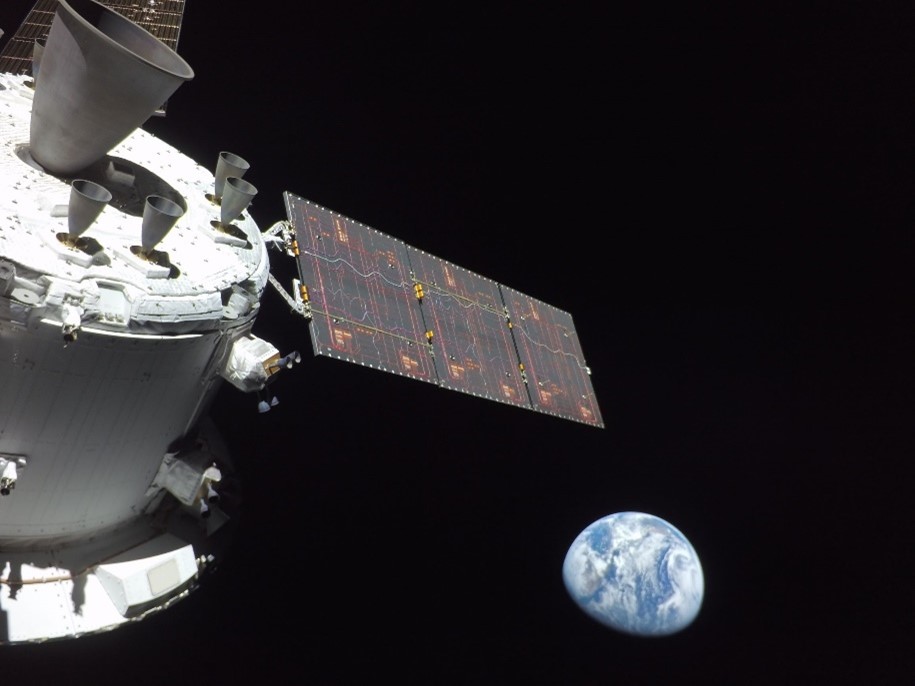
The solar arrays of the European Service Module during the Artemis I mission. Credit: NASA
Engineers have been busy with the second European Service Module since its arrival at NASA’s Kennedy Space Center. In late 2023, it was connected to the crew module and powered on for the first time. In early 2024, the spacecraft underwent electromagnetic and vacuum testing in a historic chamber originally used during the Apollo programme.
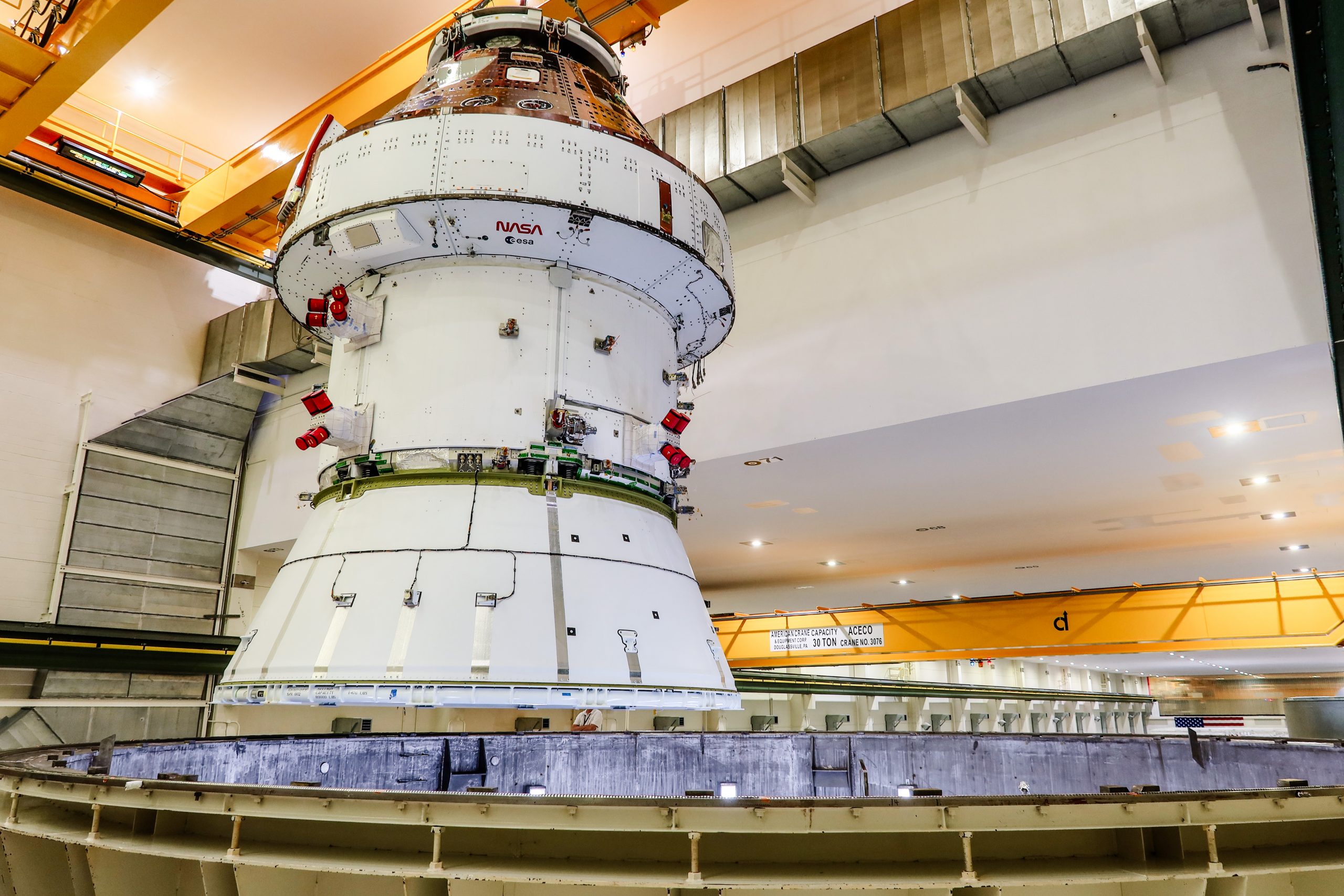
Orion being lifted out of the altitude chamber inside the Neil A. Armstrong Operations and Checkout Building at NASA’s Kennedy Space Center in Florida after electromagnetic testing in April 2024. Credit: NASA-A. Stevenson
Orion’s four solar wings – built and installed by European engineers – were added in March. These wings that will provide electricity during the 10-day mission around the Moon are now safely folded behind three protective fairing panels bearing the ESA and NASA logos.

Solar arrays installed on NASA’s Artemis II Orion spacecraft inside the Operations and Checkout Building at NASA’s Kennedy Space Center, early March 2025. Credit: Lockheed Martin
Countdown to launch
Orion is now located in the Multi-Payload Processing Facility, just a few kilometres from where it was assembled. Here, the spacecraft will be loaded with propellant, high-pressure gases, coolants and other fluids for its journey.
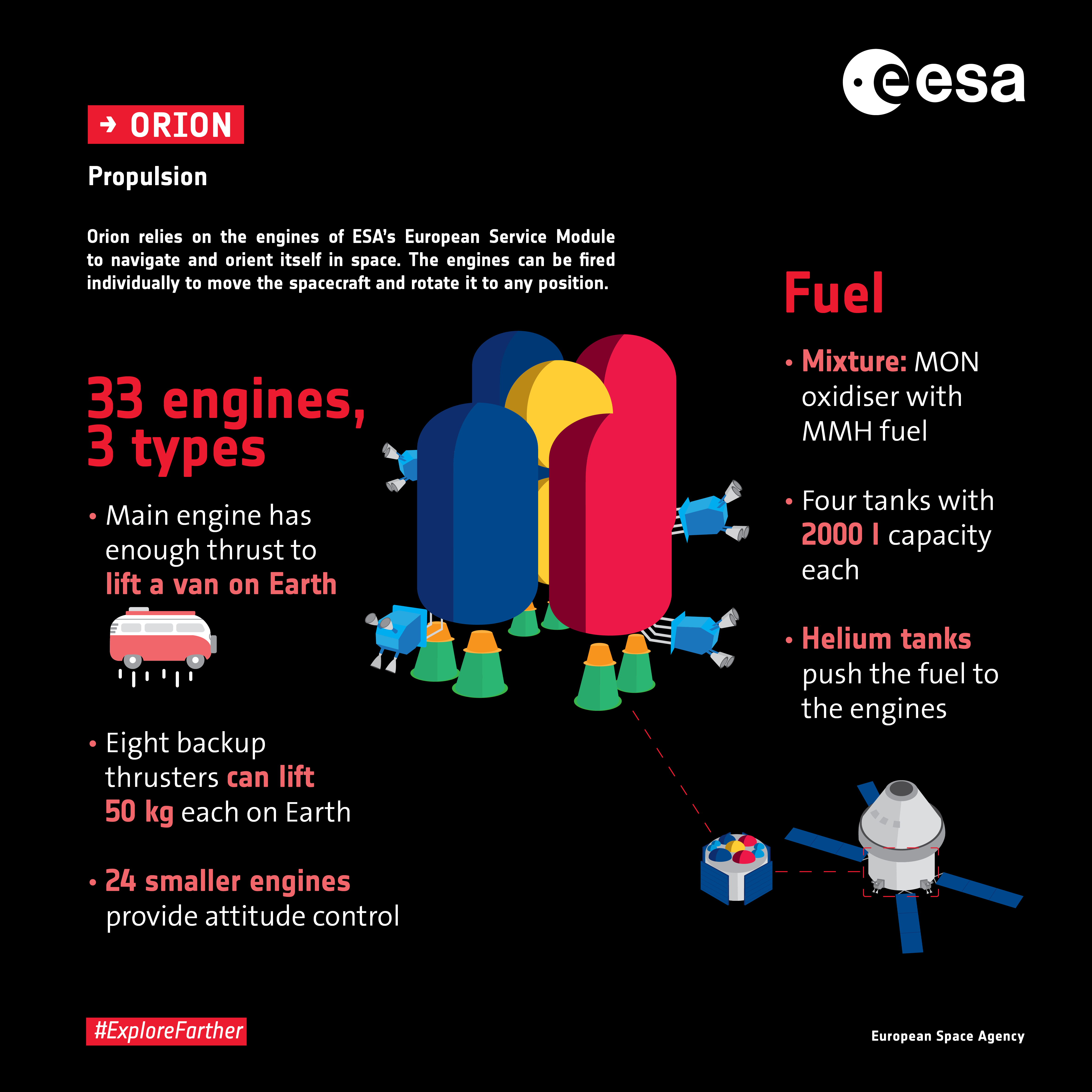
Orion propulstion. Credits: ESA
After fuelling, the Artemis II crew will enter the spacecraft to test their flight suits and onboard systems. Next, Orion will be fitted with its Launch Abort System, designed to carry the crew to safety in the event of an emergency during launch. Finally, the spacecraft will be transported to the Vehicle Assembly Building to be stacked on NASA’s Space Launch System rocket.
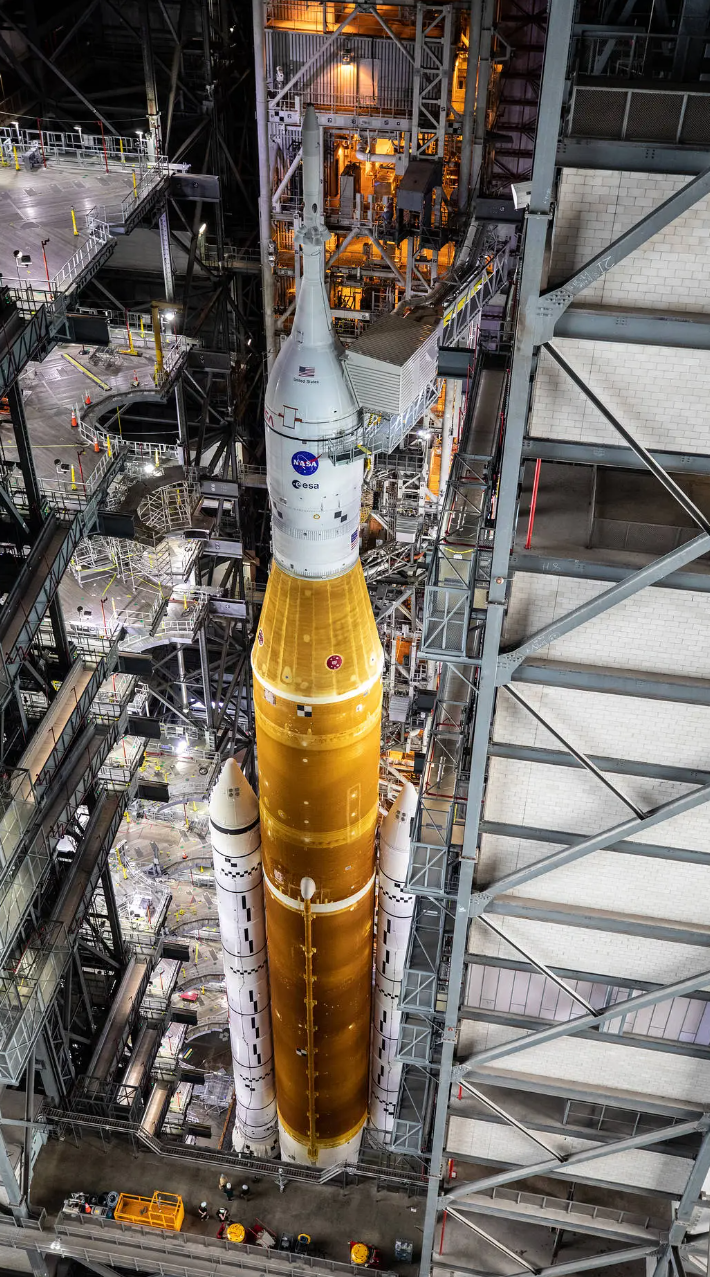
SLS, the mega Moon rocket used for Artemis missions, seen inside the Vehicle Assembly Building before the launch of Artemis 1.
Credit: NASA/Glenn Benson
With this milestone, Europe’s contribution to Artemis II is one step closer to flying astronauts around the Moon.

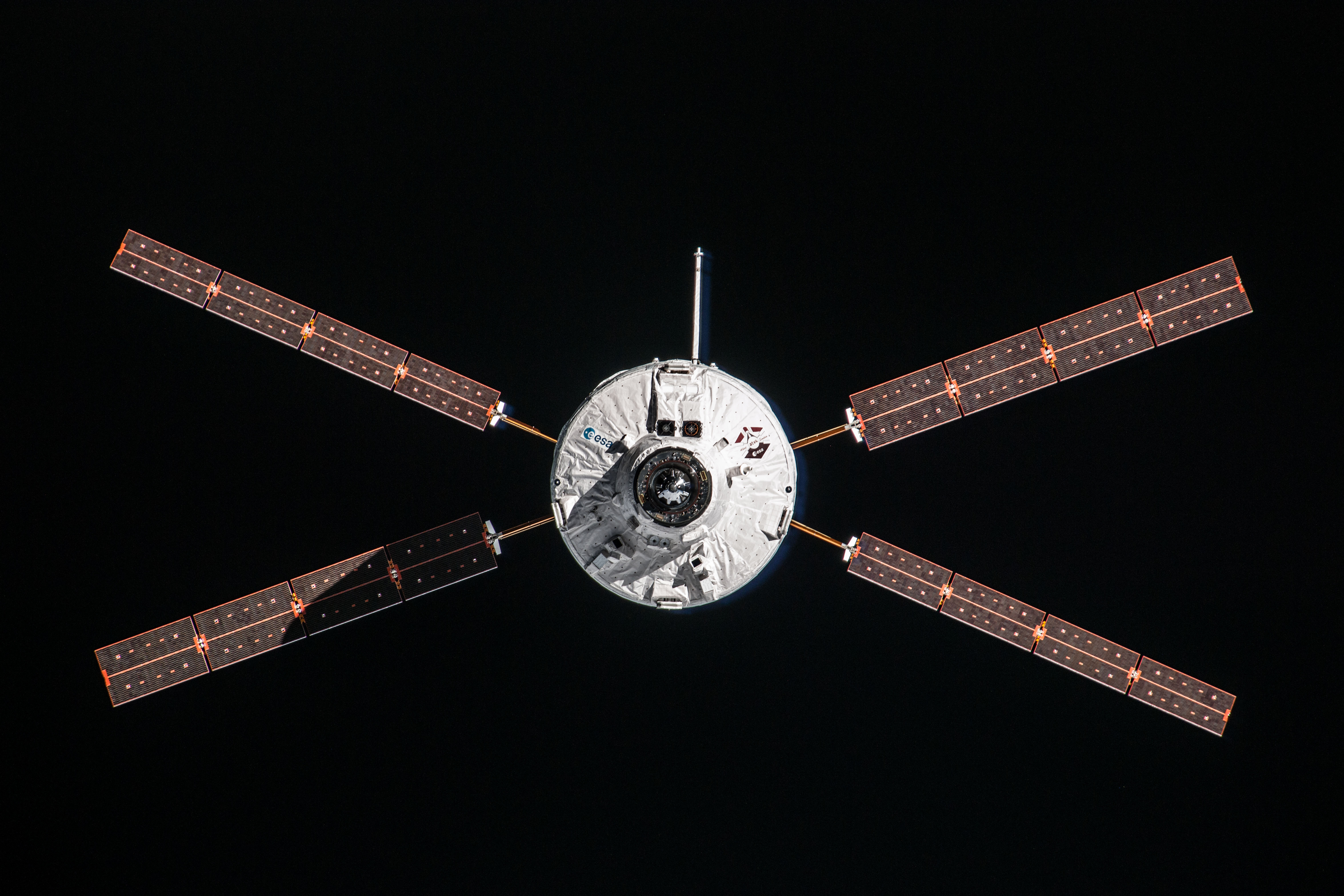 Automated Transfer Vehicle page
Automated Transfer Vehicle page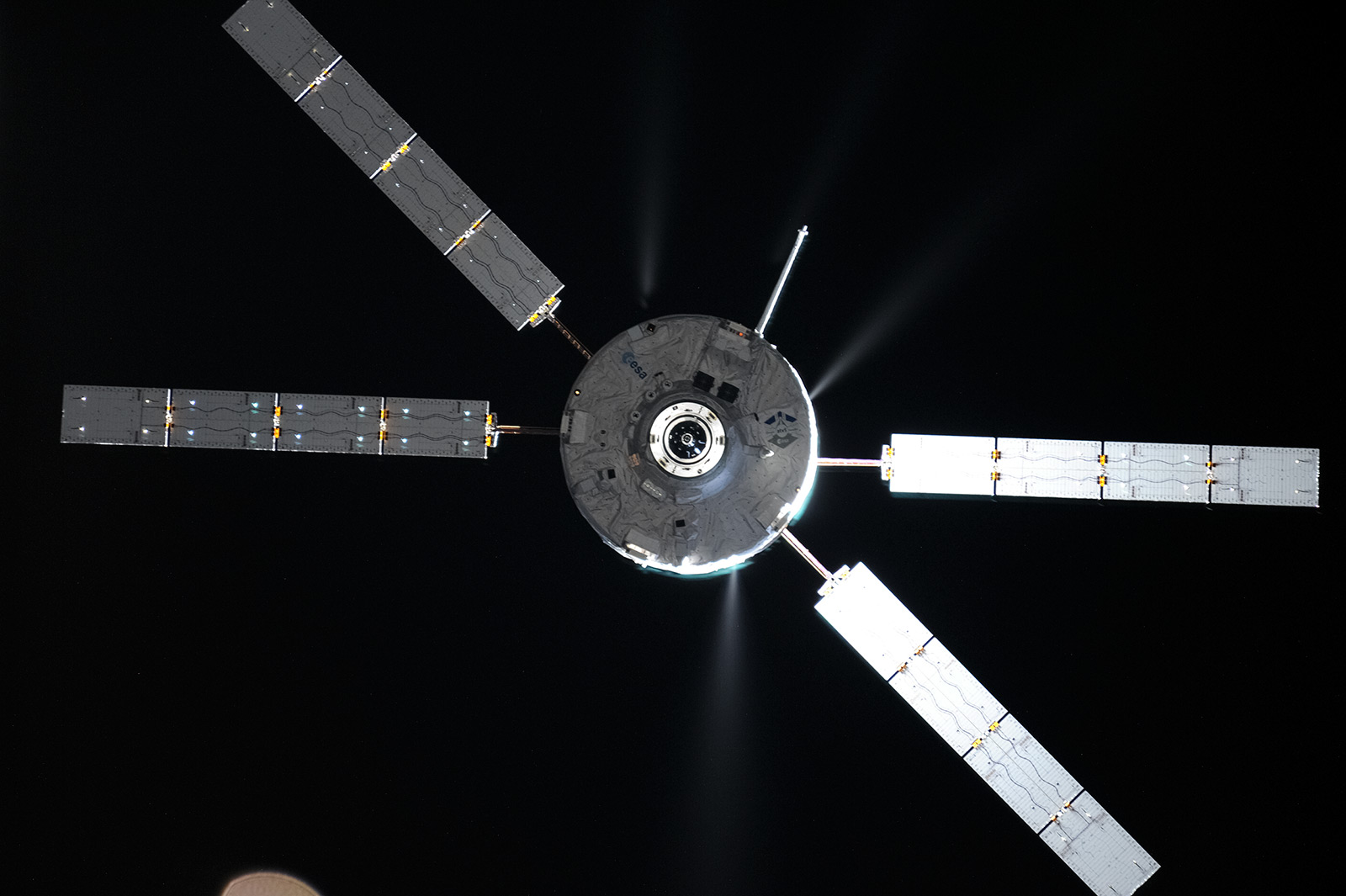 ATV blog archive
ATV blog archive
Discussion: no comments